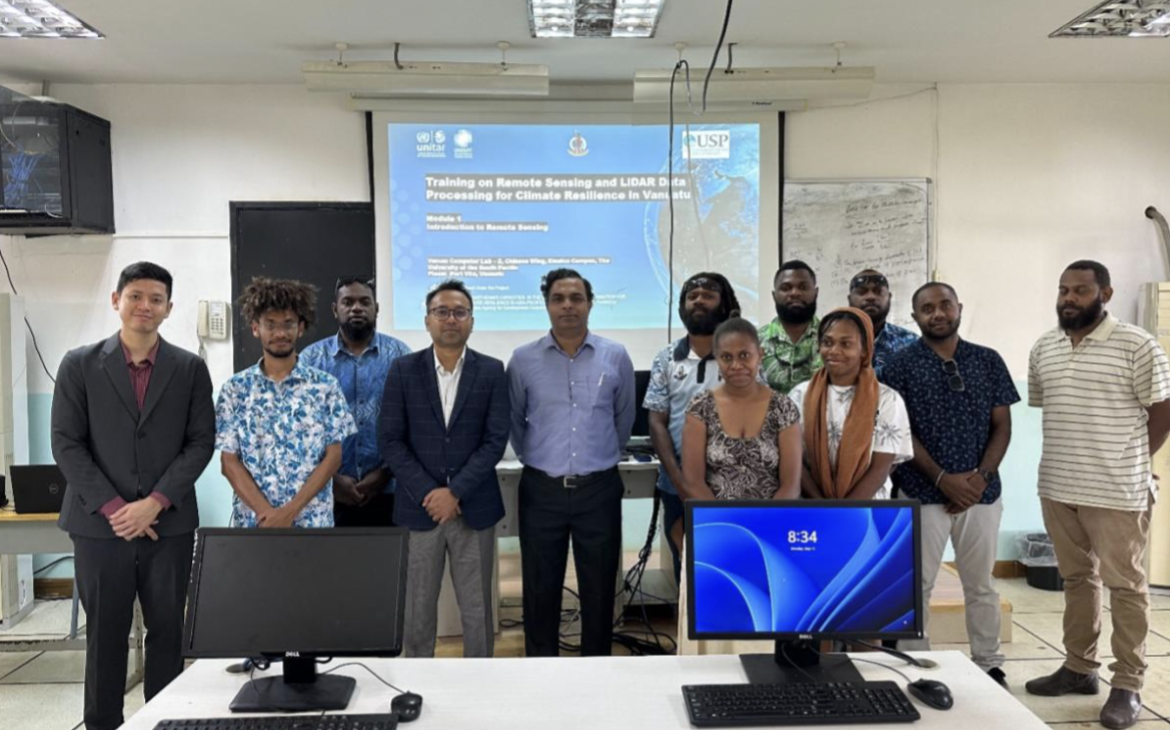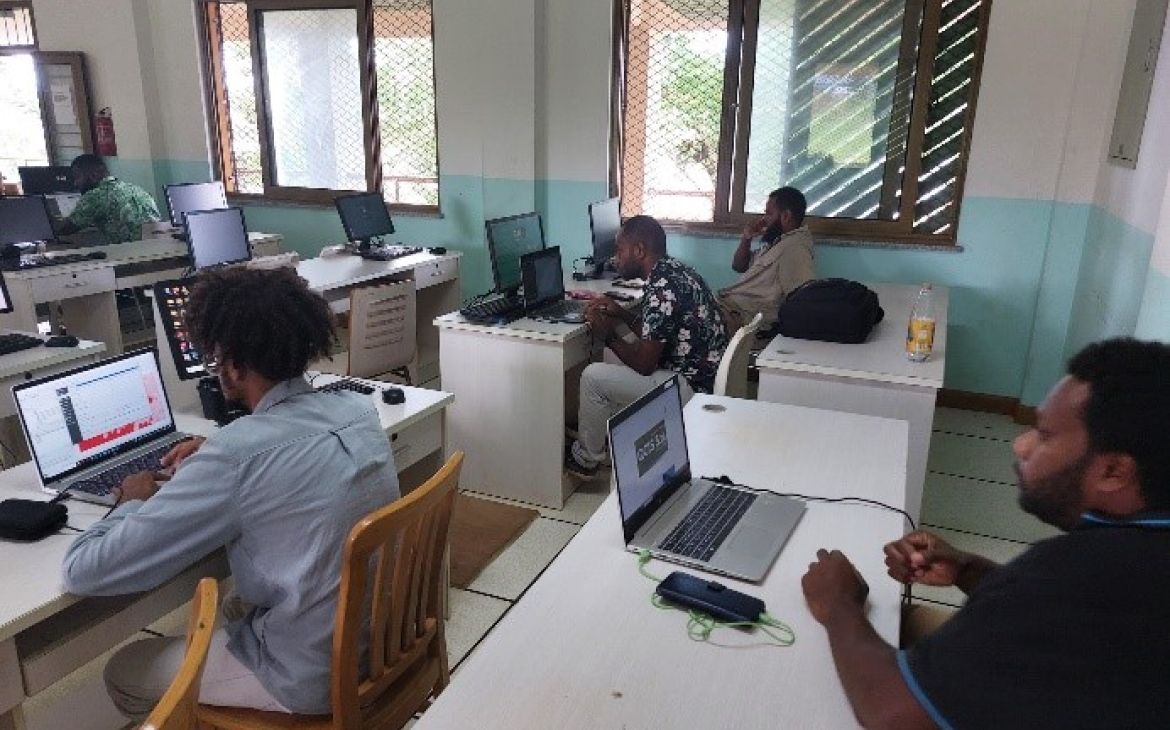Micky Welin's career in disaster risk management (DRM) highlights the intersection of education, proactive initiative, and collaborative efforts in building capacity for disaster preparedness and response. In his capacity as the Planning and Logistics Support Officer at the National Disaster Management Office (NDMO) in Vanuatu, Micky Welin's journey highlights the transformative potential of targeted capacity-building efforts.
Equipping for Success: UNOSAT Training and Geospatial Information Technology Expertise
The turning point for Micky Welin emerged when he realized the need to acquire advanced skills in geographic information technology (GIT) in the context of disaster management. This awareness led him to participate in the UNOSAT training courses on calculating vegetation indices from satellite images; detecting changes in land cover; and data management and coastal risk assessment. All these trainings were part of the project “Strengthening Capacities in the Use of Geospatial Information for Improved Resilience in Asia-Pacific and Africa (2021-2024)” with the specific aim of improving his skills in remote sensing and data processing for climate change analysis. Acquiring advanced knowledge in developing various geospatial tools during the training sessions enabled Micky Welin to skilfully analyze geospatial data, improving the NDMO's capabilities in disaster response and climate resilience initiatives.
I decided to enrol in the UNOSAT training course, with specific objectives relating to geographic information technology, remote sensing training and data processing for climate change. The goal was to improve my skills in analysing spatial data obtained using remote sensing technologies.
From Traditional Methods to Informed Decisions: The Power of Risk Maps
After the training, Micky Welin was in a position to implement the integration of GIS techniques into operational frameworks, moving away from traditional methodologies. Through the development of risk maps, Micky Welin and his team were able to discern vulnerable areas with greater precision, facilitating informed decision-making during humanitarian responses.
In the office, we use the skills acquired to create the response and we also create the maps for prioritizing humanitarian response to affected areas.
In addition, his commitment to the dissemination of knowledge has resulted in the training of colleagues, fostering a culture of collaboration and innovation within the organization.
After taking the training courses, I came back and shared the knowledge, tools, and techniques we had used during the training so that we could create products that made our reports clearer for our supervisor.
Despite the obstacles encountered, such as initial skepticism from superiors, and infrastructural deficiencies in the implementation of the GIS, Micky Welin's perseverance and proactive approach have led to tangible results. With the use of GIS, Micky Welin has gained the ability to produce risk maps for all areas affected by natural disasters. As Vanuatu is a multi-hazard country, he was unable to provide risk maps, before using GIS. Today, the NDMO has enhanced capabilities to anticipate, mitigate, and respond to various risks, from cyclones to floods.
Informed Decisions, Effective Response: The Value of GIS in Action
When a cyclone forms in Vanuatu, the NEOC (National Emergency Operation Centre) is activated, prompting GIS officers to produce risk maps showing the trajectory of a tropical cyclone and the areas potentially affected. Consequently, the rapid assessment team complements data with damage assessment maps and can intervene in the exposed areas. GIS tools and techniques are used to develop these essential GIS products, enabling Micky Welin's superiors to make informed decisions.
Micky Welin's story highlights the essential role of education and collaboration in improving disaster management practices. His contributions not only strengthen Vanuatu's resilience to natural hazards but also serve as a guiding light for a larger discourse on disaster preparedness and response strategies.




